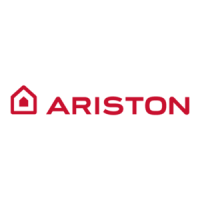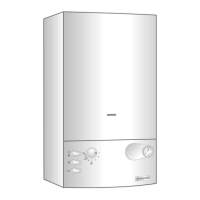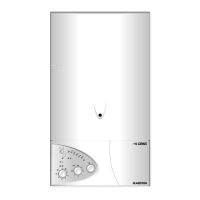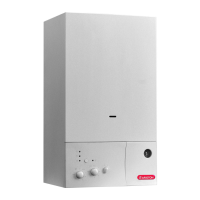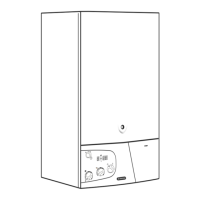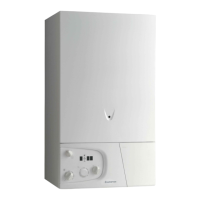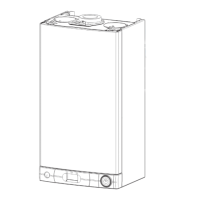FIG. 2.2
F
or saf
ety pur
poses
, ha
v
e a competent person carefully check the electrical system
in the proper
ty
, as the man
ufacturer will not be held liable for damage caused by the
failure to earth the appliance properly or by anomalies in the supply of power. Make
sure that the residential electrical system is adequate for the maximum power
absorbed by the unit, which is indicated on the rating plate. In addition, check that the
section of cab
ling is appropr
iate f
or the power absorbed by the boiler.
The boiler operates with alternating current, as indicated in the
technical information table in section 7, where the maximum
absorbed po
w
er is also indicated.
Mak
e sure that the
connections for the neutral and live wires correspond to the
indications in the diagram. The appliance electrical connections
are situated on the reverse of the control panel under the
inspection cover (see the servicing manual for further
information)
IMPORTANT!
In the event that the power supply cord must be changed, replace it with one with the
same specifications
. Make the connections to the terminal board located within the
control panel, as follows:
- The yellow-green wire should be connected to the terminal marked with the
“”
symbol;
Fasten the boiler in place using the template and anchors supplied with the unit. It is
highly recommended that a spirit level be used to position the boiler so that it is
perfectly level.
F
or additional inf
ormation, please consult the instructions contained in the
connection kit and the flue kit.
2.8 ELECTRICAL CONNECTION
2.7 MOUNTING THE APPLIANCE
132 132
C
E
400 mm
300 mm
60 mm
450 mm
LEGEND:
A = Central Heating Flow (3/4”)
C = Gas Inlet (3/4”)
E = Central Heating Return (3/4”)
mm = Clearances
2.5 OVERALL DIMENSIONS
In order to allow for access to the interior of the boiler for
maintenance purposes, the boiler must be installed in
compliance with the minimum clearances indicated in
FIG. 2.1
2.6 CLEARANCES
FIG. 2.1
6
2.4 SITING THE APPLIANCE
This appliance is not suitable for outdoor installation.
The type C appliances (in which the combustion circuit, air vent intake and
combustion chamber are air-tight with respect to the room in which the
appliance is installed) can be installed in any type of room.
Secondary ventilation is not required with this boiler. The boiler must be installed on
a solid, non-combustible, permanent wall to prevent access from the rear.

